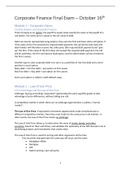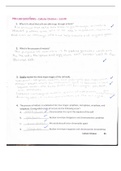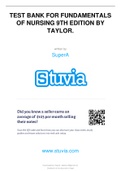Samenvatting
Summary Corporate Finance Final Exam, Global Edition, ISBN: 9781292304151 Corporate Finance (BM02FI)
- Instelling
- Erasmus Universiteit Rotterdam (EUR)
Elaborate summary that includes lecture notes, lecture slides, workshops, book chapters
[Meer zien]











